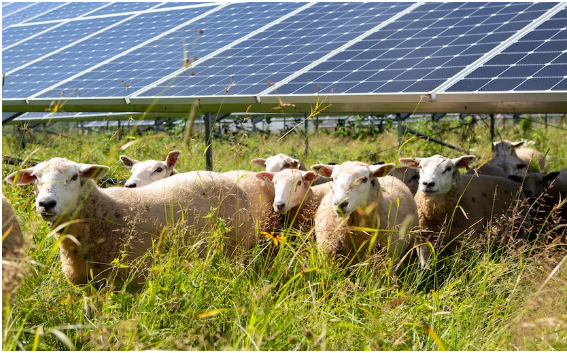As farmers, finding ways to reduce energy costs and increase sustainability is critical to long-term success. One of the most effective solutions for achieving these goals is solar energy. By harnessing the power of the sun, you can generate clean, renewable energy, which not only saves you money, but also reduces your impact on the environment. In this post, we will explore the many benefits that solar energy offers farmers.
Assessing Your Farm’s Solar Potential
Assessing your farm’s solar potential is an important step in determining whether solar energy is a viable option for your operation. Here are some key factors to consider:
Location: The amount of sunlight your farm receives is crucial for solar energy generation. Assess whether your farm is located in an area with ample sunlight throughout the year. Ideally, the location should have minimal shading from trees, buildings, or other obstructions.
Roof or Ground Space: Evaluate the availability of suitable space for solar panel installation. If you have a large, unshaded roof, it could be an excellent option for installing solar panels. If not, consider the feasibility of ground-mounted solar arrays.
Energy Consumption: Review your energy consumption patterns to determine how much electricity your farm currently uses. This analysis will help you estimate the size of the solar energy system you would need to offset a significant portion of your energy needs.
Financial Considerations: Assess your budget and financial capacity for solar energy installation. Determine whether you have the capital to invest in a solar system upfront or if financing options are available.
Energy Goals: Consider your long-term energy goals and how solar energy aligns with them. If sustainability and reducing greenhouse gas emissions are important to you, solar energy can be an effective solution.
The Solar Installation Process of Farm

Step-by-step guide to the solar installation process typically includes the following steps:
1. Site Assessment: A solar company will visit your farm to conduct a site assessment to assess the space available for solar panel installation, including roof and ground areas. They evaluate the site for orientation, shade, and structural integrity.
2. Energy Analysis: The solar company will analyze your farm’s energy consumption patterns to assess your current electricity bill. This analysis helps determine the size of the solar system needed to offset a significant portion of your electricity needs.
3. System Design: Based on a site assessment and energy analysis, Solar will design a custom solar system for your farm. This includes determining the type and number of solar panels, inverters, and other components needed.
4. Permits and Paperwork: The solar company will handle the required permits and paperwork to install the solar system. This may include obtaining building permits, entering into an interconnection agreement with your utility company, and applying for any available incentives or rebates.
5. Installation: Once the permits and paperwork are in place, the solar company will arrange for your solar system to be installed.
6. Inspection and interconnection: After installation is complete, local inspectors may come to check that the system has been installed safely and correctly. If it passes inspection, your solar system can be connected to the grid and start generating electricity.
7. Ongoing monitoring and maintenance: Most solar systems come with a monitoring system that allows you to track the performance and generation of your solar panels. Routine maintenance, such as cleaning the panels and checking for any problems, may be required to ensure optimum performance.
It is important to note that the specific installation process may vary depending on the specifics of your business and the regulations in your region. Working with a professional solar company will help ensure a smooth installation process and maximise the benefits of solar energy on your farm.
Post time: Aug-03-2023